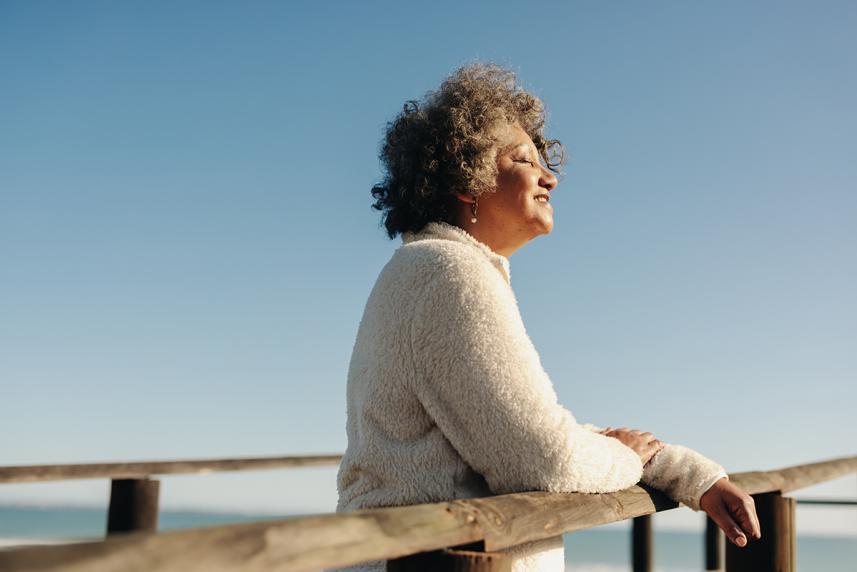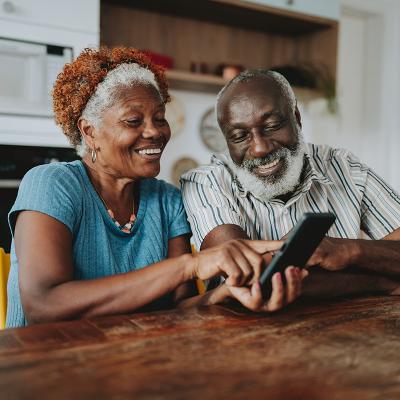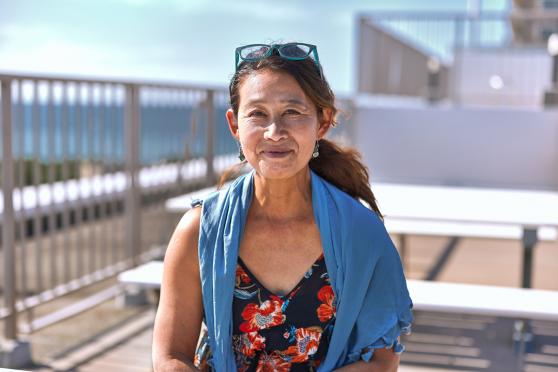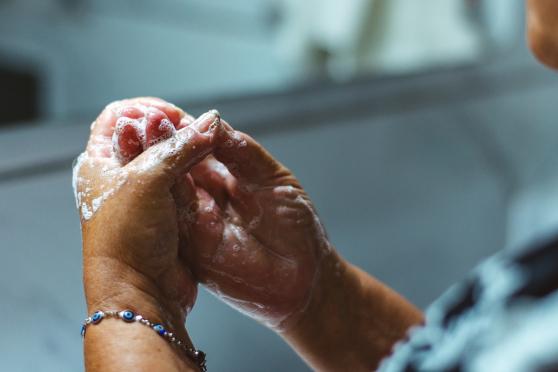6 top questions about breast cancer, answered
Thinking about breast cancer can cause anxiety. Here, we tackle your most pressing concerns to help calm your fear.

It’s likely that you know someone who’s been diagnosed with breast cancer. After all, according to the American Cancer Society (ACS), breast cancer is the second most common type of cancer in women in the U.S.
If you get regular mammograms, congratulations. Screenings are one of the best ways to catch breast cancer early when it’s most treatable. And screenings continue to be important for older women.
But there’s no doubt that many women worry about getting breast cancer. Here’s where a little knowledge is a good thing.
Learning more about the risks for older women can help you feel calmer. And it’s important to remember that having risk factors for breast cancer doesn’t necessarily mean you’ll get the disease.
Read on to find straight answers to some common questions.
Am I more likely to get breast cancer as I get older?
Yes. The chance of getting the disease goes up as you age. Most breast cancers are found in women 55 and older, according to the ACS. And the chances that a woman will be diagnosed with breast cancer increases in their 60s and 70s. That’s why staying on top of your screenings is key.
If you’re diagnosed with breast cancer, first take a deep breath. It’s natural to feel worried or overwhelmed, but there’s a lot to be hopeful about. Treatment has come a long way in the past few decades. “You can be cured of breast cancer at age 75 or older,” says Mary Chamberlin, M.D. She’s a breast oncologist at Dartmouth-Hitchcock Medical Center in Lebanon, New Hampshire. “We’ve cured people in their 90s of breast cancer, so it just depends on the situation.”

Automatic refills and our mail-order program are easy to set up and can save you money.
What are my other risks as a 60-plus woman?
Your biggest risk is simply being female, says the ACS. Women make up 99% of those diagnosed with breast cancer. (But men can get it, too. More on that below.) And besides getting older, other risk factors include:
- Family history. You’re more likely to get breast cancer if your mother, sister, or daughter had breast cancer, says the Centers for Disease Control and Prevention.
- Dense breast tissue. This makes it harder to see cancer on a mammogram. Nearly one-third of women over 65 have dense breast tissue. You probably already know if you have dense breast tissue from a past mammogram. But ask your doctor if you’re not sure.
- Reproductive history. Your risk for breast cancer may be higher if:
- You started your period before age 12.
- You started menopause after age 55.
- You were pregnant after 30, never breastfed, or never had a full-term pregnancy.
- Lifestyle. Don’t get much physical activity? Are you overweight? Do you drink too much alcohol or smoke? Those factors may add up to higher risk.
- Inherited gene changes. Women who have genetic (passed on from parents) mutations to certain genes are at higher risk.
Does a lump mean I have breast cancer?
Not necessarily. People often think that a lump in the breast automatically means cancer. But there are many reasons you may feel a lump. For example, lots of people have lumpy, ropey, or uneven breasts.
Knowing how your breasts normally look and feel is important. That way, you’ll notice if anything changes. If you feel something different, call your doctor to get it checked, says Dr. Chamberlin.
The following symptoms may be warning signs of breast cancer, according to the American Society of Clinical Oncology:
- A lump that feels like a hard knot in the breast or underarm.
- Thickening in any part of the breast.
- Breast skin that is dimpled (may look like the outside of an orange) or irritated.
- Red or flaky skin around the breast or nipple area.
- Nipple is pulling inward or is painful.
- Nipple discharge that may be bloody.
- Changes in breast size or shape.
- Breast pain.
“If there’s something there, either on a mammogram or it’s a lump that you feel, the best thing is to have a detailed, thoughtful discussion with your doctor and to have a biopsy,” says Dr. Chamberlin. A biopsy involves the removal of a small area of suspicious breast tissue that’s sent to a lab to be examined for cancer cells.
Is there anything I can do to lower my odds of getting breast cancer?
Anyone can get breast cancer. But there are some habits you can control that can reduce your risk.
If you smoke cigarettes, take steps to quit. Women who have smoked for more than 10 years may have an increased risk of breast cancer, according to the Susan G. Komen organization. Drinking too much alcohol can also raise your risk. Limit wine or beer to one drink a day or less.
More smart moves? Get regular physical activity and eat a healthy diet. If you’re overweight, both these habits can help you reach and stay at a healthy weight. And that can reduce your breast cancer risk. Some easy ways to get moving include taking a brisk walk, doing yardwork, or biking.
Do only women get breast cancer?
Men can get breast cancer, too, although it’s rare. Male breast cancer makes up less than 1% of all breast cancers, according to the National Cancer Institute. It usually occurs in men between the ages of 60 and 70.
Having female relatives with breast cancer can increase a man’s risk. So can inherited gene mutations or having had radiation to the chest.
It’s important that any man in your life reports symptoms such as a breast lump or nipple changes to his doctor. Since breast cancer is seen as a “women’s disease,” men may ignore symptoms, reports the Breast Cancer Research Foundation. That means they may be diagnosed later when the disease has advanced.
How often should women get mammograms?
A mammogram is an X-ray of the breast that can detect cancer in its earliest stages. Different organizations recommend different timelines, so ask your doctor what’s best for you. Here are general guidelines for women of all ages:
- For women between 40 and 74 years: As of May 2023, the U.S. Preventive Services Task Force recommends that women get screening mammograms every other year from age 40 until age 74. The ACS recommends an annual screening from age 45 to 54, with screenings every one or two years after that for as long as a woman is in good health.
- For women ages 75 and older: Talk with your doctor about the best screening schedule for you.
Additional sources:
Breast cancer statistics: American Cancer Society
Risk factors: American Cancer Society; Centers for Disease Control and Prevention
Breast cancer symptoms: American Society of Clinical Oncology
Lifestyle habits: Centers for Disease Control and Prevention
Breast cancer in men: National Cancer Institute
Male breast cancer symptoms: Breast Cancer Research Foundation
Mammogram guidelines: U.S. Preventive Services Task Force; American Cancer Society
H3832_8750_848451_5MS539_24_C
© 2023, Linkwell Health, Inc. All content owned or licensed by Linkwell Health, Inc. All rights reserved.


